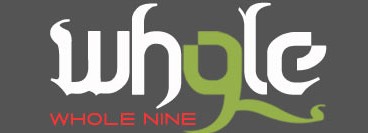30
Jan / 12
From the CFI Vault: On Dairy
Categories: Nutrition
posted by: Marcus
With those on the Whole 30 challenge having less than a week to go, I’ll be giving some tips on how the best way to experiment with foods that were off-limits for the last month. One of the most popular items people were sad to lose is dairy. Here is a wrap-up I wrote last year that summarizes what the best choices are.
On the Paleo diet, dairy is typically to be avoided. However, if you’ve eliminated it for 30 days and choose to reintroduce it to experiment and see how you handle it, what’s the best way to go about it?
First of all, you want to stick to grass-fed sources. Since the ranchers who bother to allow their cows to graze are typically quite ecologically conscious, this will likely ensure you are not adding in hormones, high amounts of omega-6 and possibly gluten or other contaminants endemic to the grain-chowing cows trapped in feedlots. (Note: your mileage may vary. Just like there are grass-fed, but not grass-finished sources of beef, dairy can be as sketchy. It pays to do your research.)
Secondly, you should go first with dairy fat sources. Ghee (clarified butter) has the vast majority of milk solids removed, leaving behind the benefits of the nutrients in the fat. Heavy cream and (unclarified) butter can often also be tolerated well by most people. Raw cream would be preferred, but is quite costly and often hard to find.
Last of all would be fermented dairy, such as yogurt and kefir. Due to the fermentation, the lactose (milk sugars) is removed. Again, these should be the full-fat versions of these items. Hopefully once you have started to walk the Paleo path, you have realized that dietary fat is not the demon the misguided food pyramid would have you think it is. Nothing makes me sadder than seeing someone eat something good like Fage yogurt, but they go with the non-fat version. *le sigh* Stephan over at Whole Health Source had a great post on this:
The fat is where the vitamins A, K2, E and D are. The fat is where the medium-chain triglycerides, butyric acid and omega-3 fatty acids are. The fat is where the conjugated linoleic acid is.
With dairy, milk is the gray area. If you are trying to put on size, it can be a powerful ally. Again, you definitely want to stick to pastured milk and you really want the raw variety (non-pasteurized). Why? There are beneficial enzymes present in the milk that get destroyed during the high temperatures of the pasteurization process. One of these is lactase, which is necessary for the digestion of lactose.
Of course, if you are trying to lose fat, the powerful insulin response that milk provides is not your friend. Insulin is the great storage hormone and you want to keep this under control when fat loss is your goal.
Due to the insulin spike from sugars along with that of dairy, it should be plainly obvious that ice cream is one of the biggest whammies. Use with extreme caution as this can run you off the rails in a hurry.
Hopefully this along with Ruth’s post about making better choices can guide you as you shed the strictness of the 30 day challenge.
WOD 01.30.12
Bench Press 3×5
Clean 3-3-3
Weighted Pull Up 2-2-2


 310.465.6565 |
310.465.6565 |



















comments